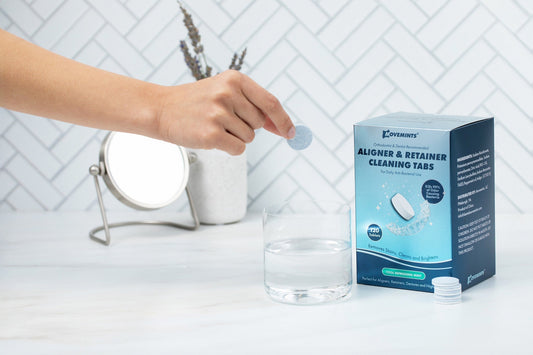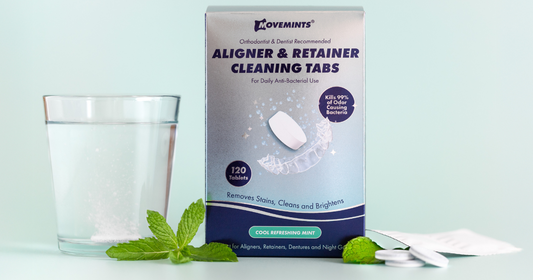My Invisalign is Cutting my Tongue! How Can I Treat It?
Invisalign Tongue Cuts: Why They Happen and How to Make Them Stop
Talking, eating, even just swallowing - your tongue is constantly moving. When you wear Invisalign or other clear aligners, sharp tray edges can turn these everyday movements into irritating cuts and sores. This guide will explain:
- Why Your Invisalign is Cutting Your Tongue
- Tips for Treating Invisalign Tongue Pain
- Other Causes of Clear Aligner Discomfort
Why Your Invisalign is Cutting Your Tongue
Sharp or rough edges on your aligner trays are the most common cause of tongue irritation. When you switch to a new set of trays, the fit is tighter and edges can feel more pronounced. As your tongue rubs against them while you talk, small cuts or abrasions can form.
For many people, the irritation fades within a week or two. If it does not, here are some solutions:
- Use orthodontic wax to create a smooth barrier over the edge that is causing the problem.
- Smooth the edge carefully with an emery board if you are comfortable doing so. Use light pressure to avoid warping the tray.
- See your provider if the irritation continues. They can adjust or replace the trays if necessary.
Tips for Treating Invisalign Tongue Pain
While your tongue heals, these simple steps can help relieve discomfort.
Rinse with Saltwater or Peroxide-Based Mouthwash
Saltwater is a natural, at-home remedy for cuts and sores. Add half a teaspoon of salt to a cup of warm water, stir until dissolved, and swish in your mouth for 30 seconds. Salt helps reduce bacteria and supports healing.
Peroxide-based mouthwash is another option. It gently cleans and disinfects while numbing discomfort from aligner-related sores.
Suck on Ice Cubes
Ice is an easy way to reduce swelling and numb pain, especially when you are out and about. Since water is safe with aligners in, you can do this anytime during your 22 hours of daily wear.
Avoid Irritating Foods
Spicy foods, citrus fruits, crunchy snacks, and acidic drinks can make a sore tongue sting even more. Choose soft, mild foods like yogurt, soup, or mashed potatoes until the cut heals.
Other Causes of Clear Aligner Discomfort
Clear aligners can cause other types of irritation besides tongue cuts. Knowing how to manage them will make your treatment much more comfortable.
Dry Mouth
Wearing aligners can sometimes reduce saliva flow, leading to dry mouth. This can increase your risk of tooth decay and make your mouth feel sticky. Drink water regularly and consider using xylitol products to promote saliva production.
Movemints Clear Aligner Mints are sugar-free, sweetened with xylitol, and safe to use with trays in. They help with dry mouth, freshen breath, and even support gentle chewing exercises that can relieve discomfort.
Tooth Pain
New trays put gentle pressure on your teeth to move them into place, which can cause soreness for a few days. Over-the-counter pain relief like ibuprofen can help. Chewing exercises are another option. Movemints have a patented groove that fits between trays and are firm enough for these exercises while keeping your breath fresh.
When to Call a Doctor
Tongue cuts from Invisalign are not usually a medical emergency. However, if you notice swelling, pus, worsening pain, or a fever, contact your dentist or physician right away.
The Bottom Line
Clear aligners are an investment in your smile, and you should not have to deal with constant irritation while wearing them. With the right care, you can prevent tongue cuts, ease discomfort, and make your treatment a more pleasant experience.




